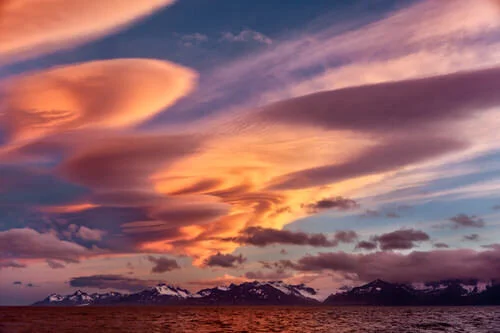Aireys Inlet Magic: Nature's Power On The Great Ocean Road
Beautiful reflection on Painkalac Creek, Aireys Inlet, along Victoria's Great Ocean Road.
The tranquil Painkalac Creek at Aireys Inlet, together with the cliffs, beach and changing mood of the Southern Ocean, provide plenty of opportunities for sightseeing, exploration and fantastic landscape photography at this peaceful stopover along Australia’s iconic Great Ocean Road.
Aireys Inlet is named after the small, coastal inlet of the same name along Australia’s Great Ocean Road. Located southwest of Melbourne, between the townships of Anglesea and Lorne, Aireys Inlet hosts the iconic Split Point Lighthouse, Eagles Nest and the nearby surfing hotspot at Fairhaven Beach.
Read on and discover the beauty that awaits you when you visit Aireys Inlet. One of my favorite places along the Great Ocean Road.
Table of Contents:
Where Is Aireys Inlet?
Located 123 km from Melbourne, in a sublime location along Australia’s Great Ocean Road, Aireys Inlet is one of those very special places where the quality of the light and the slow, easy going nature of life in the township make for a very alluring travel destination.
The Painkalac Creek that flows, via a shallow tidal lake to the beach and, from there, into the sea is gorgeous and contributes to the laid back vibe most folks associate with Aireys Inlet.
Photo Opportunities at Aireys Inlet
The photo at the top of this post was made during a Landscape Photography Workshop I was running along the Great Ocean Road.
It was dusk when we pulled our cars over to the side of the road, prior to heading up the hill to photograph the Split Point Lighthouse above and on the other side of the dune.
It was fun making photos under the beautiful, soft light at day’s end and a great preparation for what lay ahead of us during what became an unexpected, but incredibly creative night photography session of the Split Point Lighthouse.
Have no doubt that, if you’re looking for more than a snap shot record of an iconic location, it will be the quality of light that will transform the coastal landscapes around Aireys Inlet for you.
Needless to say, very early morning and either side of sunset are often the best times to photograph the shallow tidal lake, the last stop for the waters of the Painkalac Creek before it reaches the sea.
That’s particularly the case when winds are light and beautiful reflections form on the surface of the water.
Aireys Inlet Photographed With Fuji Velvia Film
Back in my film photography days I photographed Aireys Inlet beach and its surrounds on numerous occasions. It was always a joy to do so as the quality of the light seemed almost magical in this part of the world.
I particularly enjoyed photographing the lake and nearby sand dune with my Hasselblad X-PAN camera and Fuji Velvia 100F film.
Despite being a loyal Kodak employee for 8 years, I have no problem declaring that Fuji Velvia 100F transparency (i.e., slide) film was the best film I ever used for color landscape photography.
That being said, it wasn’t until after I left Kodak that I switched over to Velvia 100F film. Loyalty is important to me, and I’m nothing if not loyal.
Eagle Rock near Aireys Inlet along the spectacular Great Ocean Road, Australia.
Once we reached the top of the sand dune, the group and I got busy making photos of the lovey Eagle Rock a local landmark just offshore from the even more famous Split Point Lighthouse.
While Eagle Rock is the main focal point of the photo, I also like the contrast between the dramatic sky and the sombre deep tones of the water and the bushes in the foreground of this image.
The image was made way back in 2009 with my first DSLR, a Canon 5D camera, and a Canon 24 mm f/1.4 L series USM lens. The smooth, velvet texture in the water resulted from a slow shutter speed of 20 seconds on this tripod based photo.
This wispy effect in moving water increases with the length of the exposure. However, experience indicated to me that noise was likely to become visible, with the camera in question, when exposure times exceeded 30 seconds.
During post processing I opted for a warm tone black and white rendering. In this case it’s a mix of sepia and olive tones. I hope you like it.
Having said that, I’m well overdue for a return trip to Aireys Inlet, and I can’t wait until that day comes.
Split Point Lighthouse, Aireys Inlet, illuminated with red light under starry sky.
The Iconic Split Point Lighthouse At Night
Actually our landscape photography workshop concluded at dusk, but a few of the group agree to stay on with me for an impromptu night photography session.
That’s when I made this photo of the iconic Split Point Lighthouse, lit with red light, at night.
I remember how cold the night became.
Nonetheless, I always find that making photos is so much fun that any physical discomfort is greatly minimized by the intensity of the experience. You’re really in the moment when you’re making photos.
The results can be amazing, but don’t underestimate the value of the actual experience of making photos when the light is right. It can be a transformative and, on occasions, a transcendental experience.
What’s more, it’s legal. Now what’s not to like about that.
Ultimately, you do have to suffer a lit bit for your art. And I’ve missed loads of nice dinners when traveling around the world to make photos.
“You can always eat tomorrow.”
I don’t know how many times I’ve had to reassure myself with those words.
No doubt you’re wondering how I went about making this very usual night photo of the Split Point Lighthouse.
I guarantee there’s no photoshop hocus pocus involved.
Being white, the lighthouse was going to reflect quite a bit of the light that reached it. However, given that it was nighttime, there just wasn’t all that much light reaching it.
As a result, I had to think creatively. That meant finding a relatively portable, diffuse and bright lightsource that could be directed onto the surface of the lighthouse.
I parked my car, a Subaru Forester (to date, the best car I’ve owned), in such a way that the lights from the back of the car would illuminate the lighthouse.
For an even more evocative effect I asked one of the participants to hold down the break pedal on my car to illuminate the lighthouse, with red light, while I made the photo.
Of course, that was after I'd done the same thing for the rest of the group.
The photo was made with a Canon 24 mm f/1.4 L series USM lens mounted onto my then Canon 5D camera. The exposure was made with my camera set to a relatively modest 400 ISO, a shutter speed of 30 seconds and an aperture of f/4.
I think this photo is a great example of how creative photography can be when your primary motivation is fun.
Outside of the creative approach, to illuminate the lighthouse with the red colored light emitted from my car’s break lights, I’d say the photo came about as a result of the following:
Being prepared to accept physical discomfort for the sake of your art
A willingness to experiment
A cooperative approach to making photos
Surf and mist at sunset, Aireys Inlet, Great Ocean Road, Australia.
Evocative Light at Aireys Inlet Beach
It's always worthwhile taking the time to explore a location. If you have plenty of time, you can do so in a relatively leisurely manner.
If not, then you’ll have to hustle, which kind of goes against the natural flow we should be experiencing around the edges of the day when the light is usually at its most beautiful.
The trick, when making photos at such times, is to be prepared to break away from preconceptions and respond to what's happening, in the here and now.
I remember sprinting to get into position for this photo looking down onto the beach at Aireys Inlet as the warm sunset, rolling waves and rising mist coalesced to produce a very evocative image.
You'll be interested to known that the silhouetted rock featured on the right hand side of the frame is part of the same structure in the image at the very top of this post.
I’m simply photographing from the opposite side of the cliff.
The main difference between the two images is where I'm making the photos from, in relation to the light, and the slightly later time of day this particularly atmospheric image was made.
“The brighter the light, the darker the shadows will photograph.”
When you photograph with the light behind you, as is the case with the photo of the reflections forming on the surface of the shallow tidal lake at Aireys Inlet at the top of this post, color and detail are revealed.
Conversely, when you photograph into the light, subject matter that is not illuminated will likely record as a silhouette.
About To Travel?
Conclusion: Memories Of Aireys Inlet
I've been fortunate to have traveled and photographed on six different continents over the years.
Yet, despite the privilege of having photographed truly remarkable landscapes and all manner of interesting people, my memories of Aireys Inlet remain strong.
In fact, I used to dream about owning a holiday house in the area.
It's particularly pleasing to finally post photos showcasing my visits to Aireys Inlet.
They’re a potent reminded that it's the special qualities of light, at either end of the day, that transforms our landscape photos from snapshots into something quite special and unique.
It’s no wonder why many folks have made the sea change and moved to Aireys Inlet and other scenic locations along Australia's Great Ocean Road.
It's no longer my dream to live there, but the beauty of Painalack Creek, Eagle Rock, Split Point Lighthouse and the rest of the spectacular Great Ocean Road retain a special place in my memory.
I can’t wait until my next visit to Aireys Inlet.








